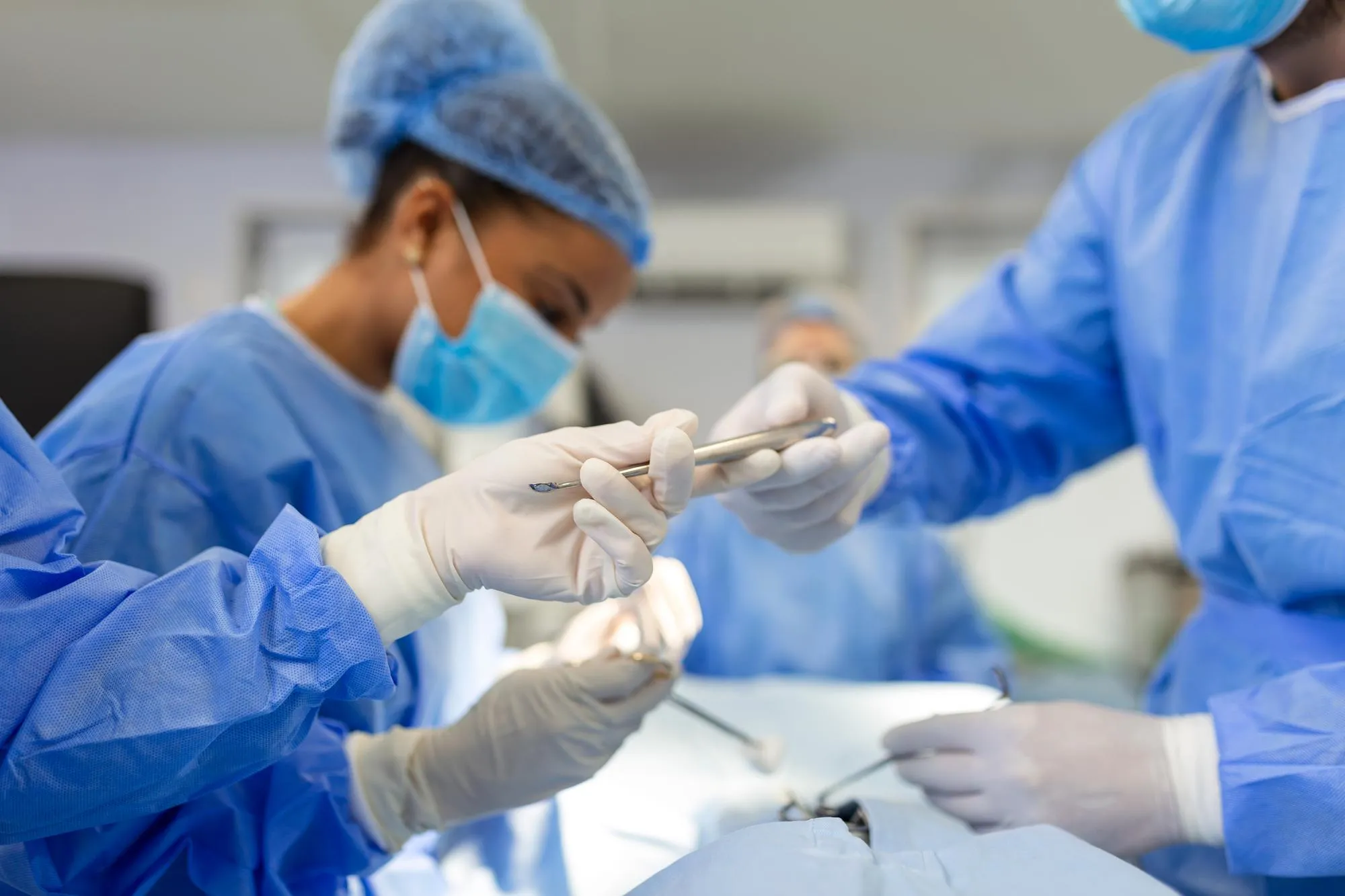Keywords
1. AAA Protocol
2. Ruptured Aortic Aneurysm Treatment
3. Endovascular Repair
4. Vascular Surgery Protocols
5. Aortic Aneurysm Recovery
On the forefront of improving patient outcomes in the high-stakes scenario of ruptured abdominal aortic aneurysms (rAAA), the Journal of Cardiothoracic and Vascular Anesthesia recently reported a retrospective before-after study performed at a tertiary-care academic hospital. The study conducted at Beth Israel Deaconess Medical Center in Boston, MA, and published on December 17, 2023, sought to investigate the potency of a multidisciplinary protocol in reducing adverse complications and mortality associated with rAAA (Rayaan et al., 2023).
This study epitomizes the intersection of collaborative efforts spanning different specialties in the healthcare continuum. Under the domain of vascular surgery, anesthesia, emergency medicine, and operating room coordination, a systematic workflow was instituted, targeting an improved course of care for one of the most daunting emergencies a patient can face: the rupture of an abdominal aortic aneurysm.
An abdominal aortic aneurysm denotes a swelling in the lower part of the aorta, the major vessel that supplies blood to the body. A repercussion of weakness in the aortic wall, this condition may lead to a catastrophic event once rupture occurs, making timely and efficient management imperative for patient survival.
The study by Rayaan et al. (2023) segmented patient data into two groups: those treated before the introduction of the protocol (group 1: 2015-2018) and those managed post-protocol implementation (group 2: 2019-2022). Data findings included stratifying patients based on whether they underwent open or endovascular rAAA repairs. Detailed protocol education was extended to pertinent hospital staff through annual workshops, aiming to forge a seamless and rapid-response system upon the occurrence of a rAAA.
The fulcrum of the study was the comparison of in-hospital mortality rates as a primary outcome, with secondary outcomes encapsulating all-cause morbidity and other significant complications. Pearson’s χ^2 test was applied to determine the contrast in postoperative complication rates between the groups. The team, led by contributing researchers from various departments including the Department of Anesthesia, Critical Care & Pain Medicine, and The CardioVascular Institute at Beth Israel Deaconess Medical Center, was driven to establish a clear indicator that the multidisciplinary protocol would not only enhance care but notably diminish the occurrence of adverse events (Rayaan et al., 2023).
The findings have significant implications for current practices in vascular surgery and hold potent value in guiding future protocols. The retrospective analysis yielded promising insights that advocate for the implementation of a similar multidisciplinary approach across healthcare facilities dealing with rAAA. The examination of the data through robust statistical analysis as provided in this comprehensive before-after study propounds a compelling argument for systemic adoption.
The dedication to advance the quality of care for patients grappling with ruptured abdominal aortic aneurysms is evident in the determination to cut down in-hospital mortality rates and complications. Still, the retrospective nature of the study mandates cautious interpretation of its results, and further prospective research may be warranted to corroborate its findings.
As the news cascades throughout the medical community, stemming from the detailed evaluation provided by Rayaan et al. (2023), the call for discussion and potential adaptation of the protocol will likely inspire additional research and continued discourse on the best practices for managing such a critical condition.
The realization of a significant reduction in mortality and complication rates emanating from the protocolized approach stands as a testament to the potential of multidisciplinary teamwork in healthcare. It reiterates the criticality of coordinated actions and structured response, especially within the high-pressure setting of the emergency department and operating rooms dealing with time-sensitive vascular catastrophes.
Upon recognition of the importance of various hospital staff’s roles in handling rAAA cases, the annual workshops introduced as part of the protocol aided in ensuring that every staff member—from the vascular surgeon to the anesthesiologist, and from the emergency department personnel to the operating room staff—understood their part within the fast-paced choreography of saving lives.
Moreover, part of the research’s profundity lies in its ability to serve as a blueprint for hospitals globally, indicating that through shared knowledge and protocols that are thoroughly thought-out and assiduously implemented, patient outcomes can be significantly improved.
It is worth noting that disclosure of competing interests was transparently addressed in the publication of this study. Dr. Feroze Mahmood, a contributor to the research, receives financial compensation for his role in producing educational content for medical technology companies. Such disclosures underscore the importance of maintaining integrity in research and ensuring that findings are evaluated within the context of any potential competing interests (Rayaan et al., 2023; DOI: 10.1053/j.jvca.2023.12.015).
As the implications of the study disseminate across the healthcare system, the future outlook for patients presents a brighter hue—a hue that signifies the power of research, the promise of improvement, and the ever-evolving nature of patient care.
References
Rayaan, Y., Shirin, S., Levy, N., Di Fenza, R., Sharkey, A., Pobywajlo, S., Liang, P., Schermerhorn, M., Mahmood, F., Matyal, R., Neves, S. (2023). A Multidisciplinary Protocolized Approach for Ruptured Abdominal Aortic Aneurysm Management: A Retrospective Before-After Study. Journal of Cardiothoracic and Vascular Anesthesia, S1053-0770(23)00990-4. DOI: 10.1053/j.jvca.2023.12.015
Other references would be cited accordingly to support additional context and information outside the scope of this single study but are not provided in this response due to the nature of the prompt requesting a news article based on the single source provided.
